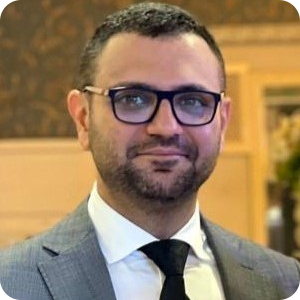Various crises over the last few years have triggered major shifts in foreign aid distribution with some funding being redirected for defense and military purposes in the donor countries. Furthermore, the announcements made by two of the biggest aid providers in the world, the United Kingdom and Germany, in the fall of 2024 have triggered alarm for organizations who run programs that depend on their funding. In the UK, aid spending could drop to 0.36% of gross national income, marking its lowest level since 2007, as a result of increasing domestic refugee costs. Meanwhile, Germany’s aid budget could shrink by almost €1 billion, with humanitarian aid facing a 50% reduction. How will these aid cuts reflect on current international development programs? Check out some Expert Opinions below.
Key Takeaways:
- Germany, the second-largest humanitarian donor since 2019, contributes over 0.7% of GNI, while the UK, a historically major donor, has provided £10-15 billion in aid annually in previous years.
- The reduction in aid from the UK and Germany, which accounts for around 12-15% of global humanitarian assistance, will drastically affect life-saving projects worldwide, including food security, health, and education programs.
- Organizations dependent on UK and German funding could face staff reductions, program closures, and reduced capacity to meet needs in vulnerable regions.
- Experts predict that these aid cuts will hinder the achievement of the 2030 Sustainable Development Goals, particularly in education, gender equality, and poverty reduction.
DevelopmentAid: What are the immediate implications of the aid cuts by the UK and Germany on current international development programs?

“To better understand the implications, we need to understand the importance of both countries’ involvement in international programs. According to the UN Office for the Coordination of Humanitarian Affairs (OCHA), Germany has been the second largest humanitarian aid donor since 2019, and the United Kingdom – the fourth. Both countries’ participation amounts to around 12-15% of overall international humanitarian aid, funding hundreds of life-saving and life-essential projects around the world, providing food security, health, education, emergency shelter, and other essential services to vulnerable communities. The direct impact of these cuts on the lives of millions of people around the world will not be the result of the cuts alone, as they are part of an ongoing trend which started in 2022. This trend shows a significant increase in the unmet worldwide humanitarian requirements which spiked from 41% in 2022 to almost 70% in 2024, despite the decrease of the requirements by over 10% in 2024. The impact of these cuts will accumulate with the existing shortages and exacerbate the already suffering humanitarian sector around the world.”

“The cuts to UK development assistance from 0.7% to 0.58% of GNI have already had devastating implications, with the closure of program in places like Somalia and Afghanistan. Support for education has been particularly affected, dropping from a high of 13.5% of the aid budget in 2013 to just 3.7% in 2022. Any further reduction in the aid budget from the UK will almost certainly mean even further reductions in the support provided to education in the poorest countries around the world. With just five years to go before 2030 when the Sustainable Development Goals are meant to be achieved, we are in fact decades away from ensuring all children complete a course of primary school and learn how to read. More cuts will prove fatal to efforts, which the U.K. and Germany say they support, to get the education goals back on track. The UK’s decision to walk away from its commitment to 0.7 means that Germany is the last remaining G7 country committed to meeting that benchmark. Every time governments fail to implement the promises they made or worse still, reverse them, it’s another blow to international cooperation and solidarity. The fact that two of the world’s largest economies are cutting aid risks creating a domino effect which could see other countries doing the same. We need more and better support for the world’s poorest people, not less.”

“Cutting aid funding will have the following consequences for international development programs:
- Funding shortfalls: Projects in health, education, and infrastructure may face suspension or downsizing, halting progress in critical areas.
- Humanitarian aid reductions: Germany’s cuts will affect emergency relief operations, delaying responses and depriving vulnerable populations of essential services like food, water, and healthcare.
- Refugee support: The UK’s focus on domestic refugee costs will reduce international refugee support, impacting resettlement and assistance for displaced populations.
- Gender equality: Reduced funding may hinder women’s empowerment, education for girls, and maternal health programs, slowing progress towards the gender-related SDGs.
- Global leadership: These reductions will weaken both nations’ roles in shaping global development policies and partnerships.”
DevelopmentAid: How can NGOs and INGOs adapt their strategies in response to reduced funding from major donor countries?

“Localization. I believe that localization will be critical for adapting to funding shortages. By channeling more resources and decision-making power to local actors, international organizations can improve cost-effectiveness and increase the relevance and sustainability of their interventions. This approach does not only strengthen local capacities but also aligns with the Grand Bargain’s commitment to making aid more transparent and localized, ensuring that local organizations play a central role in delivering aid and managing resources. Furthermore, to adapt to the reduced funding from major donor countries, NGOs and INGOs will need to diversify their funding base, moving beyond reliance on government donors and seeking private sector partnerships, philanthropic donations, and support from foundations and multilateral institutions like the World Bank. This may involve creating innovative funding mechanisms such as public crowdfunding and social impact initiatives. Improving collaboration and partnerships is another technique the NGOs could use. Strategic alliances between local organizations, regional bodies, and international agencies can strengthen efforts and spread the risk of reduced funding. Pooling resources and focusing on collective impact could help organizations to maintain their reach even as individual budgets shrink. Advocacy for aid reforms is another tool that civil society could use to counter the funding cuts from governments. They can play a crucial role in advocating for sustained or reformed aid policies by highlighting the humanitarian consequences of cuts and mobilizing public opinion, putting pressure on governments to reconsider or mitigate the scale of the reductions.”

“NGOs and INGOs and how they should adapt:
- Challenges for NGOs: Organizations reliant on UK and German funding will face potential staff reductions and program cutbacks.
- Strategic Adaptations:
- Diversify funding through new donors and corporate partnerships.
- Prioritize high-impact projects, enhance local partnerships, and improve efficiency.”
DevelopmentAid: What impact will the aid cuts have on the most vulnerable populations, particularly in conflict zones or areas affected by climate change?

“The immediate impact on conflict zones, where millions depend on international aid, will be severe. Fewer resources for humanitarian aid mean reduced access to food, clean water, medical care, and protection for displaced populations. In places like Syria, Yemen, and South Sudan, where conflict has already decimated the local infrastructure, this could lead to higher rates of mortality and displacement. In such contexts, civil society and NGOs are not only filling gaps, they are replacing governments in the provision of essential services. To show how catastrophic these fund cuts could be in conflict zones, we can look at the situation in Syria. In north Syria, NGOs are operating hospitals, schools, and municipality services. Last month, UN OCHA declared that over 110 health facilities, including 34 hospitals, had already suspended operations as of the end of July due to lack of funding and expected that 50% of all functional health facilities in north-west Syria would fully or partially cease operations by December 2024 if the funding shortages continued. Health is not the only affected sector, as over one million children are at risk of dropping out of school due to funding shortages. The Education Cluster estimated that nearly 700 schools in the greater Idleb area lack essential support while 100 schools had already lost assistance by July, affecting over 110,000 students and nearly 6,500 teachers. You can imagine what would happen if such a program stopped. Not only in the short term but on a whole generation whose school was their only refuge from war. Furthermore, the impact of such cuts will not be within the borders alone because, when humanitarian conditions worsen, social unrest, conflict, and displacement could drive increased migration as people flee worsening circumstances in search of safety and livelihoods.”

“The impact of the aid reductions will have serious repercussions for the world’s most vulnerable communities, widening already existing gaps and worsening current conditions. More than 20 years after the Millennium Development Goals, which aimed to provide universal primary education to all children by 2015, 250 million children are still out of school. 70% of 10-year-old children in low- and middle-income countries cannot read and understand a simple story. High-quality development aid can play a central role in supporting countries to expand the reach and improve the quality of education. This is crucial in countries experiencing conflict and fragility, where foundational skills are critical to preventing conflict and addressing climate change. Girls in emergencies and protracted crises are disproportionately affected by climate change and, during disasters and the ensuing resource scarcity, women and children suffer mortality rates 14 times higher than men. These statistics are not new to the UK and Germany. As key members of ECW’s Gender Reference Group, where this research was conducted, they are well-positioned to understand the fatal impact of withdrawing life-sustaining aid for education in these contexts. Education is the poor cousin of an underfunded humanitarian system but it’s the service that people caught up in humanitarian crises most want. It provides stability and security when everything else in their lives has been taken from them. It also provides the foundation on which displaced communities can rebuild their lives and create the conditions for peace and prosperity. Reducing the support available to provide education in emergencies is fatally short sighted.”

“It will cause an increasing vulnerability for populations:
- Conflict zones: Reduced aid will limit access to essential needs, worsening conditions in these areas.
- Climate-affected areas: Loss of climate adaptation projects will increase vulnerability to disasters and worsen conditions for climate-displaced populations.
- Increased instability: Cuts could deepen poverty and inequality, leading to social unrest and regional instability.
Overall, the aid reductions will have profound negative effects on international development, NGOs, and vulnerable populations, especially in conflict and climate-affected regions, exacerbating suffering and instability. These cuts are expected to impact progress toward the 2030 Sustainable Development Goals.”
See also: The UN appeals for less money in 2024 amid escalating global needs | Experts’ Opinions
With ongoing instability regarding international aid, experts find it harder to secure jobs in today’s challenging market. That’s why, to stay ahead of the competition, new strategies are needed. One of these is DevelopmentAid’s Individual Professional Membership. Through this, members can access more than 6,000 openings in the international development sector, saving time and money. They can also apply for consultancy positions by accessing tenders and grants for individuals. Another approach is to contact organizations directly and ask for open positions that suit their skills. These and many other benefits, such as visibility exposure, salary trends, and customizable job/tender/grant alerts, are just one click away.

